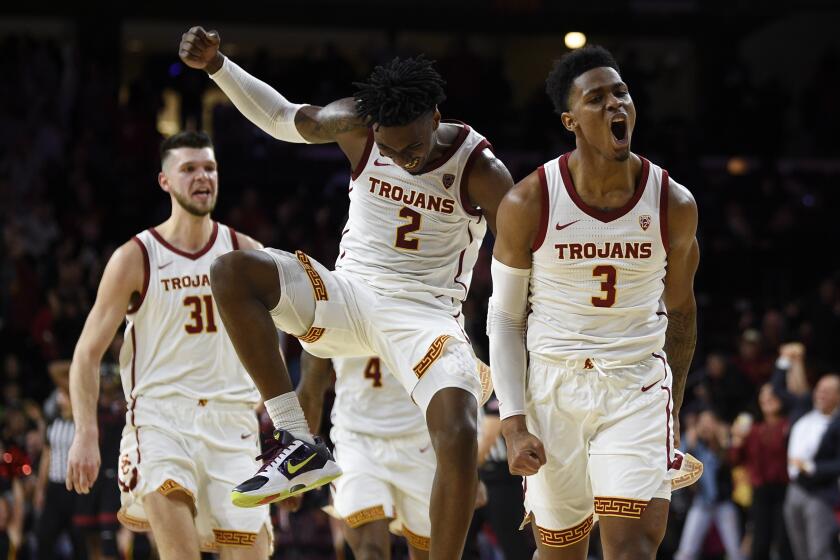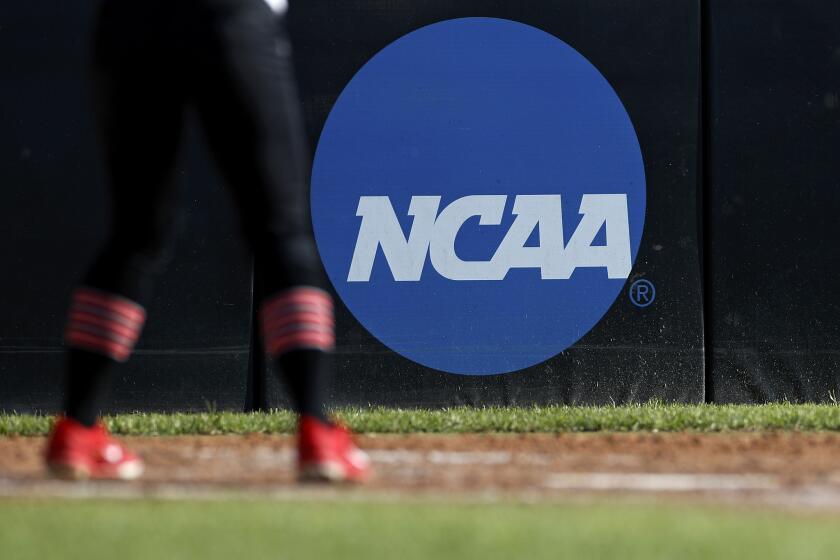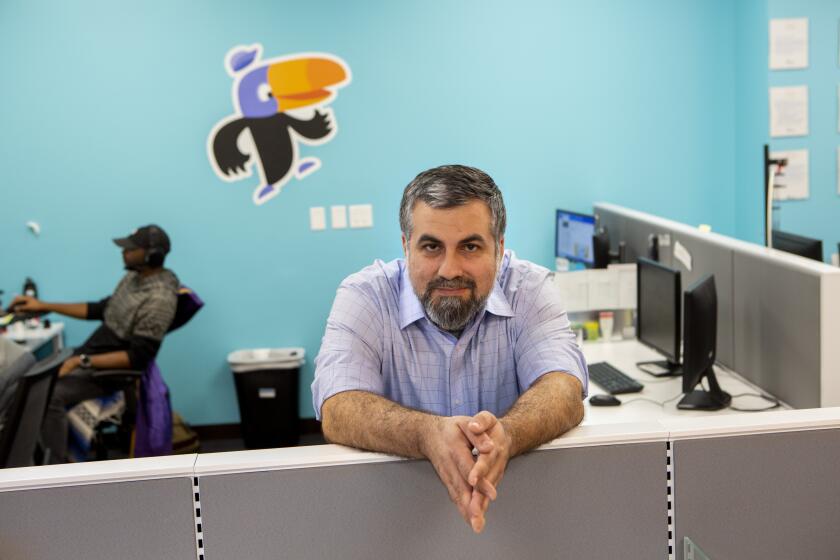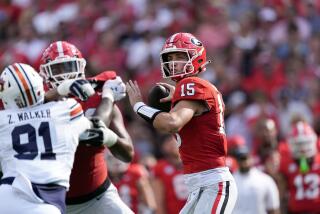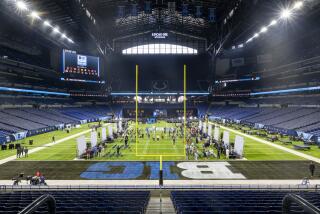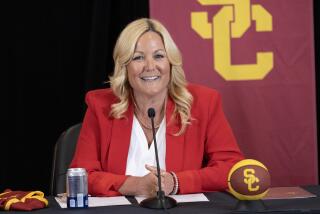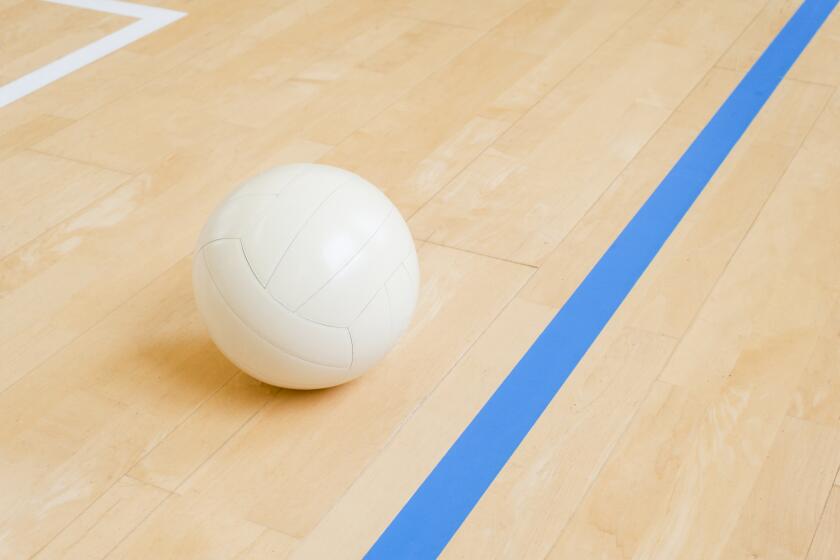News Analysis: NCAA president Mark Emmert tries to rally administrators as athletes’ pay becomes issue
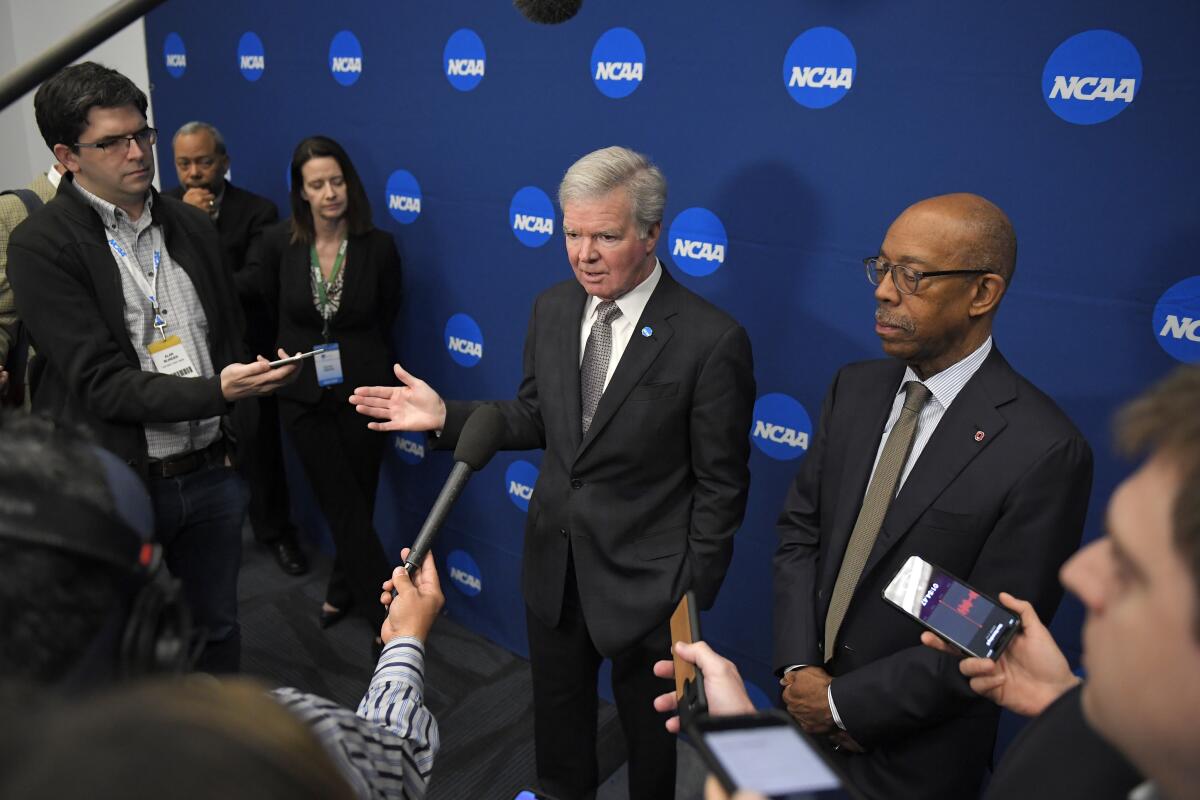
On Thursday night at the NCAA Convention’s annual “State of College Sports” plenary session, Mark Emmert, a president rallying his constituents at a time of crisis, delivered a message that was predictably light on detail but heavy on rhetoric meant to build consensus on a shared mission before the attendees returned to their respective campuses.
With his association under fire from the outside as never before, Emmert moved deftly between the usual talking points — “We’re in the human development business, first and foremost,” he began — and the reality of the mounting issues that have torn down public confidence in this uniquely American institution.
“But I also want to talk about something that’s a hard truth right now, that many people, too many people, believe that there’s something fundamentally unfair right now about college sports,” Emmert said on a stage at the Anaheim Convention Center flanked by cinema-sized screens flashing his image as he spoke. “We see it and we read it and we hear it all the time. I know for me, and I’m sure for most all of you, that’s really frustrating.”
Earlier in the day, at the NCAA’s Division I Forum, an alarming statistic had been presented to the audience: Seven percent of a group surveyed about college sports have trust in the NCAA to act in the best interest of “student-athletes.”
USC’s basketball team has a big rotation of games this week to see if it can be viewed as a school that can make the NCAA tournament.
“I think part of it is, primarily, most people see just a sliver of college sports,” Emmert said. “They see March Madness, the College Football Playoff, ‘College GameDay.’ They see multi-million dollar contracts, they see elaborate facilities, they see big Hollywood productions. … We shouldn’t necessarily be surprised that some people look at this and say, ‘Gosh, what’s changed in the relationship with the students while all of this has been going on?’ Something doesn’t seem quite right when they juxtapose those two things.”
Emmert was alluding to the demands for college athletes, particularly in football and men’s basketball, to be able to receive compensation for contributions that help bring in millions upon millions of dollars to schools. Emmert only referenced the pressure for name, image and likeness reform a handful of times, once pushing aside the NIL issue as a “symptom” of the larger problem of perceived unfairness within the model.
He was here to remind the assembled group of college administrators that it was them — not politicians in Washington and in state capitals across the country; not critics in the media; not the conflicted fans and alumni who pack the stadiums — who are best qualified to make the needed changes.
“Now, we know, everybody here knows, that there is so much more to college sports than just that sliver, right?” he said. “It’s our job to answer those questions.”
It was a call for the NCAA and its membership to fight for continued relevance.
“2020 can’t be a year of business as usual,” Emmert said. “We’ve got to double down on the opportunities that we provide to our students.”
After his 18-minute speech, a toned-down version of Emmert appeared in front of reporters to field questions about developments regarding name, image and likeness.
The chair of the NCAA Division I council says the body is committed to drafting new proposals for regulating name, image and likeness of athletes by April.
Removed from the stage in an adjacent room, Emmert spoke matter-of-factly about the biggest issue he’s confronted in his decade as NCAA president.
“There’s clearly a narrowing of the options that are available,” Emmert said. “People are having a better understanding of what an NIL policy would look like across all three divisions. Most folks are worried about whether or not you can have such a system and maintain integrity in your recruitment model.”
Emmert echoed the Wednesday comments of Dr. M. Grace Calhoun, the chair of the Division I Council, saying there is “consensus” that would allow athletes to profit from their name, image and likeness in a “work product” situation, which removes the student playing a sport as a reason for the compensation.
The questions became harder to answer once athletic prowess is factored into the market for an endorsement deal.
“How do you determine the marketplace if someone is going to do some sponsorship deal, what’s the real market for that versus what a booster is going to be doing and creating an artificial market, if you will?” Emmert said. “How do you police that? Would that be a national office, would that be a third party, how could you do that in a way that students have confidence in it? It’s something the association has never done.
“In some ways, it’s not dissimilar from what happened years ago around jobs. People said there’s going to be people paying exorbitant salaries. Well, you can create a marketplace. A marketplace for a journalist is X, if they’re doing that and they’re getting 3X, we know there’s something going on here. Doing that around name, image and likeness is a little more complicated, obviously, but it’s not impossible.”
Emmert said he expects to see legislative proposals in April and those would be shared with representatives of Congress. It’s likely the NCAA would not vote on NIL changes until Jan. 2021 at the next convention, where he will take the stage again.
StudentPlayer.com is a website that employs crowdfunding techniques to connect college athletes with sponsorship opportunities available at schools.
“College sports is about students playing other students,” Emmert said. “That’s what people love about college sports.”
More benefits
The Division I Council voted Wednesday that athletes designated as elite by nationally recognized groups may receive additional developmental training expenses from the U.S. Olympic and Paralympic Committee or national governing bodies, including travel for parents, guardians, coaches, training partners and sport experts.
Those same elite athletes also may work out with coaching staff members without it counting against time limits, but only if the workout is initiated by the student and doesn’t cause missed class time.
“Student-athletes who are training and preparing for elite competitions like the Olympics can face difficult financial choices,” Calhoun said, “and NCAA rules now provide additional flexibility to allow these students to prepare to compete for their country while also maintaining their eligibility for college sports.”
More to Read
Go beyond the scoreboard
Get the latest on L.A.'s teams in the daily Sports Report newsletter.
You may occasionally receive promotional content from the Los Angeles Times.

